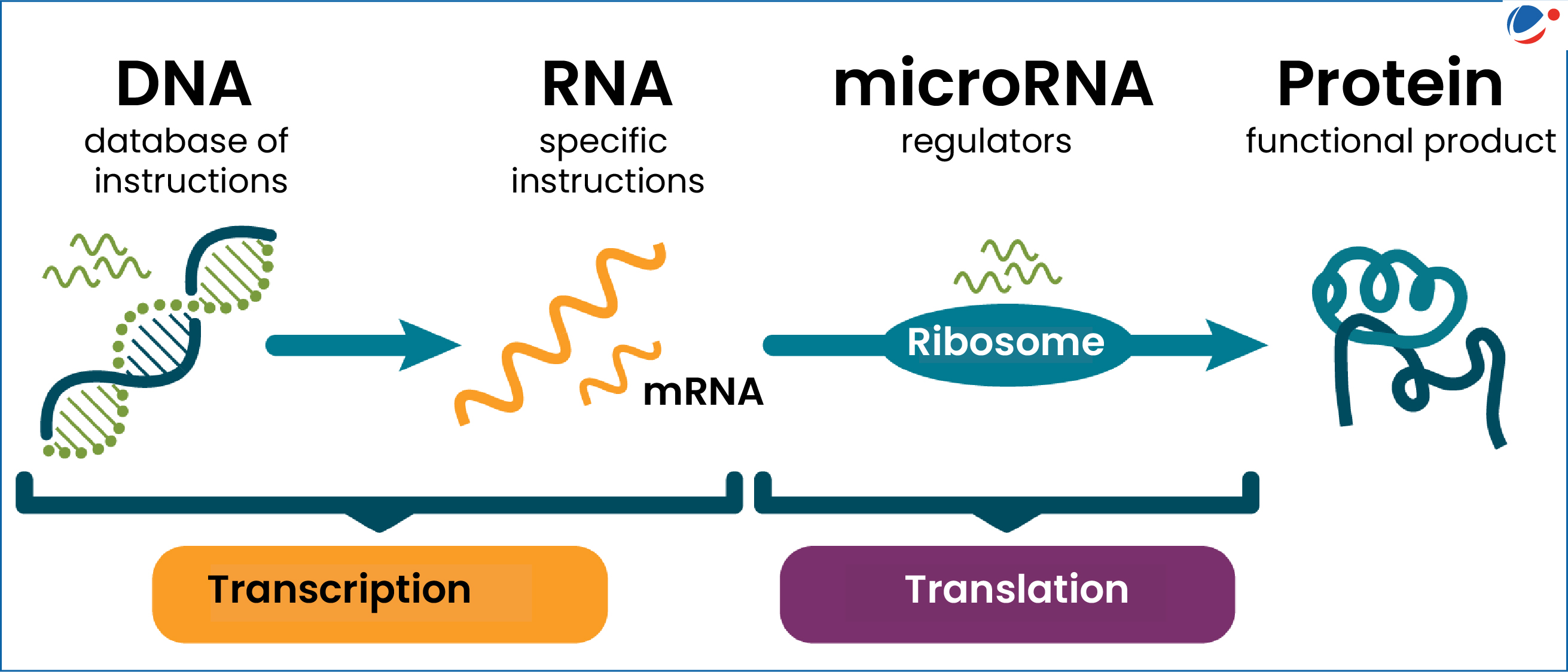The groundbreaking discovery of microRNA in the early 1990s by researchers Gary Ruvkun and Victor Ambros serves as a monumental milestone in the field of gene regulation, ultimately earning them the prestigious Nobel Prize in physiology or medicine in 2024. This fascinating discovery, initially published in the journal Cell, unveiled a new dimension of genetic control that would later be recognized as fundamental to how various organisms, including humans, develop and function. Funded primarily through NIH grants, Ruvkun and Ambros’s research initially attracted limited attention, but over the years, it ignited a surge of interest within the RNA research community and beyond. As scientists began to explore the pervasive roles of microRNAs, particularly in the regulation of protein-coding genes, it became evident that these tiny RNA molecules are crucial players in a multitude of biological processes. Today, the potential for microRNA-based therapies in treating diverse diseases such as heart conditions, cancer, and neurological disorders is rapidly advancing, marking a remarkable evolution from their humble beginnings in genetic research.
The exploration of small, non-coding RNA molecules, known as microRNA, has catalyzed a transformative movement in molecular biology, impacting our understanding of gene expression and cellular functionality. Initially overlooked, this category of RNA, identified by Ruvkun and Ambros, has grown to imperative significance within the scientific community, leading to innovations in therapeutic approaches and pharmaceutical developments. Through sustained government support, particularly from the National Institutes of Health, researchers have continued to uncover the pivotal roles that these microRNAs play across a variety of organisms, including their evolutionary implications. As interest swells in the realm of RNA biology, the promise of microRNA research paves the way for breakthroughs that could redefine treatment options for numerous diseases, providing hope for enhanced medical outcomes and a deeper comprehension of genetic intricacies.
The Pioneering Discovery of microRNA
In the early 1990s, Gary Ruvkun and Victor Ambros ventured into the uncharted territories of genetics, leading to the groundbreaking discovery of microRNA. This tiny RNA molecule unveiled a new dimension of gene regulation, previously unseen, that would fundamentally alter the understanding of gene expression in various organisms, including humans. The pair’s discovery, which was initially published in the prestigious journal Cell in 1993, seemed to garner little attention at first, reflecting a prevailing skepticism in the scientific community regarding its broader implications. Such skepticism is often faced by revolutionary discoveries, yet Ruvkun and Ambros persisted amid doubts and continued their research funded significantly by NIH grants, highlighting the critical role of federal support in advancing scientific inquiry.
As research into microRNA progressed, it became increasingly evident that these small molecules held significant power in controlling gene activity across diverse biological systems. The interest surrounding microRNA surged, particularly as it became clear that similar regulatory mechanisms were at play in organisms ranging from plants to mammals. This burgeoning recognition prompted a shift in how RNA research was perceived, pulling in a wider audience from various biological disciplines eager to explore the secrets held within these minute molecular regulators.
The Role of NIH Funding in Advancing Gene Regulation Research
National Institutes of Health (NIH) funding has played an instrumental role in the development of the genetics field, particularly in the research concerning microRNA. Ruvkun emphasizes that approximately 75% of his laboratory’s funding has originated from government support, reinforcing the notion that a strong federal investment is vital for scientific progress. The modest funding amounts, approximately $150,000 a year, may seem limited, yet they provide essential resources for Ruvkun’s research team, underscoring how government funding can nurture innovation and maintain scientific productivity even in smaller laboratories devoid of extravagant budgets.
The continuous support from NIH not only aids in sustaining research endeavors but also facilitates groundbreaking studies that can lead to monumental advancements in medicine. As a result of these initiatives, therapies based on microRNAs are currently navigating through clinical trials, seeking to address significant health issues like cancer and Alzheimer’s disease. The connection between NIH funding, basic research, and practical applications in health care illustrates a successful framework whereby federal investment contributes not only to scientific understanding but also to potential therapeutic breakthroughs.
MicroRNA’s Impact on Health and Disease
The implications of utilizing microRNA in medical science are vast and revealing. Ruvkun’s discoveries have paved the way for innovative therapeutic strategies aimed at treating a plethora of diseases, including heart disease and various cancers. Ongoing clinical trials are exploring the application of microRNA-based therapies, with the potential to revolutionize treatment protocols. These advancements affirm the essence of basic research in yielding tangible benefits for society, as foundational discoveries gradually transition into practical medical solutions that enhance patient care.
The intricate role of microRNAs in gene expression and regulation also speaks to their significance in understanding disease pathology. Researchers are now delving into how microRNAs influence cellular processes and contribute to the onset or progression of diseases. The revelation that approximately 1,000 microRNAs exist within the human genome, regulating most human protein-producing genes, underscores their fundamental importance across various biological contexts. Consequently, continued research into microRNA not only enriches scientific knowledge but is also pivotal in developing targeted therapies that address complex health challenges.
The Evolution of RNA Research
Since the inception of microRNA discovery, the RNA research field has experienced explosive growth, transforming from a niche area of interest into a bustling frontier of biological investigation. Conferences that once attracted a modest audience now witness throngs of attendees, drawn in by the groundbreaking potential of RNA-related studies. This expansion reflects the paradigm shift beginning in the 1990s, where researchers from diverse disciplines began recognizing the shared roles of tiny RNAs in various organisms, thereby fostering interdisciplinary collaborations that propel the field forward.
The growing excitement around RNA research forms part of a larger scientific narrative that underscores the inherent value of curiosity-driven exploration. As researchers continue to unlock the complexities of gene regulation through microRNAs, the insights gained have far-reaching implications beyond biology. New discoveries fuel innovation in biotechnology, influencing fields from agriculture to medicine, demonstrating how foundational research can serve as a catalyst for comprehensive advancements, thus reinforcing the significance of its continued support and growth.
Gary Ruvkun: A Champion of Basic Science
Gary Ruvkun’s journey in RNA research showcases the long-lasting impact of dedicated scientific inquiry. Despite his notable accolades, including the prestigious Nobel Prize, Ruvkun maintains a humble view of his contributions, highlighting the vital role that a supportive research environment plays in fostering creativity and innovation. His commitment to basic science symbolizes a philosophy that values foundational research, allowing scientists to explore and innovate without immediate commercial pressures. This dedication echoes throughout the scientific community, illustrating the importance of allowing inquiry to flourish unimpeded by transient trends.
Ruvkun’s career represents a broader trend in scientific research where basic discoveries lead to unprecedented breakthroughs in diverse fields. His work and that of his contemporaries reflect the significant strides made possible by governmental support through NIH funding, which has enabled researchers to pursue ambitious projects with the long-term vision necessary for transformative science. As the implications of these discoveries come to fruition, they exemplify Ruvkun’s belief that investment in scientific research yields substantial returns for society, reinforcing the need for sustained support in this sector.
The Future of microRNA Therapeutics
As research continues to evolve, the future of microRNA therapeutics appears promising. With ongoing clinical trials and discoveries enhancing understanding of how these microRNAs function in various diseases, medical researchers are increasingly optimistic about their potential roles in personalized medicine. Strategies that specifically target microRNAs could offer tailored therapeutic options, transforming the landscape of treatment for diseases once considered complex or difficult to manage.
Exploring the vast potential of microRNA will also require continued interdisciplinary collaboration, harnessing insights from genetics, molecular biology, and pharmacology to develop effective treatments. As the scientific community grapples with the nuances of microRNA biology, the next decade may witness a rapid acceleration of therapeutic advancements, ultimately contributing to improved outcomes for patients grappling with chronic illnesses where current treatment options are less than satisfactory.
Scientific Collaboration and the Importance of Community
The discovery of microRNA serves as a testament to the power of scientific collaboration, as Ruvkun and Ambros worked closely within a community that shared a passion for RNA research. This collaboration exemplifies how effective partnerships between researchers can lead to groundbreaking findings that individual efforts might not achieve. The shared engagement within the RNA community has allowed for a convergence of ideas and methodologies, enhancing the scope and depth of research, and catalyzing innovations that exemplify collective progress.
Building strong networks among researchers not only enriches the scientific dialogue but also fosters an environment where ideas can thrive. The evolution of interest in microRNA has prompted an influx of experts from varying fields, creating a multidisciplinary ecosystem that continually explores the complexities of gene regulation. As more scientists contribute to this evolving narrative, the potential for future discoveries expands, demonstrating that enduring community engagement is vital to the progression of scientific understanding and innovation.
Economic Implications of Scientific Research
Ruvkun articulates concerns over the potential socio-economic impacts of diminishing federal support for scientific research. He notes how early investments in research have historically propelled the U.S. into a position of scientific and technological leadership. Current threats to funding could disenfranchise emerging scientists, pushing them to look for more stable opportunities abroad, thus undermining the talents that drive innovation within the United States. The fate of scientific pursuit bears significant consequences not only for research and development but for the larger economic infrastructure that relies on a steady stream of innovative breakthroughs.
The ripple effect of reducing federal funding can have profound implications, as reduced research capacities may stifle advancements across various industries. With significant pharmaceutical companies and biotech firms relying on the foundational research supported by NIH grants, the health of these industries is closely linked to ongoing scientific exploration. Ensuring continued investment in scientific research is fundamental to maintaining the United States’ competitive edge in the global economy and fostering growth in sectors essential for future prosperity.
Celebrating Breakthroughs in Basic Science
The achievement of Ruvkun and Ambros in the discovery of microRNA is not merely a personal victory but a celebration of the broader potential of basic scientific research. Such breakthroughs signify the triumph of perseverance in the face of initial skepticism and the realization that the path of science is often nonlinear, with twists that can lead to unexpected and groundbreaking outcomes. The recognition of their work with a Nobel Prize underscores the vital role that curiosity-driven research plays in advancing human health and understanding, fostering a collective appreciation for scientific inquiry.
As the field of RNA research continues to flourish, it highlights the need for ongoing commitment to foundational science that offers the promise of transformative societal contributions. As evidenced by the progress made in microRNA therapeutics, there is much to be celebrated in the scientific community. This celebration is intrinsic to encouraging new generations of scientists, as they are inspired to push boundaries and explore the unknown in search of discoveries that could one day revolutionize our understanding of biology and medicine.
Frequently Asked Questions
What is the significance of Gary Ruvkun’s microRNA discovery in the field of gene regulation?
Gary Ruvkun’s discovery of microRNA in 1992 is pivotal in the field of gene regulation, as it unveiled a new dimension of how genes are regulated at the RNA level. MicroRNAs play a crucial role in controlling gene expression, impacting various biological processes. This work, which led to the Nobel Prize in Medicine in 2024, has fundamentally reshaped our understanding of genetic mechanisms across species.
How did NIH funding contribute to the discovery of microRNA?
NIH funding was instrumental in the microRNA discovery journey led by Gary Ruvkun and Victor Ambros. The financial support allowed for sustained research efforts over decades, fostering an environment where groundbreaking ideas could flourish. Without these federal grants, the exploration and eventual identification of microRNA as critical regulators in the genetic framework may not have progressed as it did.
What advancements in RNA research emerged from the discovery of microRNA?
The discovery of microRNA initiated a wave of advancements in RNA research, highlighting their essential roles in gene expression and regulation. Following Ruvkun’s findings, researchers have unearthed numerous microRNAs in the human genome, identifying about 1,000 that regulate several protein-producing genes. This research has paved the way for innovative therapeutic approaches targeting microRNAs in diseases like cancer and heart disease.
How have microRNAs been integrated into therapeutic applications since their discovery?
Since the groundbreaking discovery of microRNA, various therapies based on their mechanisms are currently in clinical trials for treating serious conditions, including cancer, Alzheimer’s disease, and heart disease. The understanding of microRNAs has led to targeted therapies that harness their natural ability to regulate gene expression, marking significant progress in RNA research and medicine.
What role does microRNA discovery play in the future of genetic and medical research?
MicroRNA discovery is pivotal for the future of genetic and medical research, as it has unveiled novel pathways for gene regulation and function. Ongoing studies and innovations in this field will likely lead to breakthroughs in understanding complex diseases, developing targeted RNA-based therapies, and enhancing personalized medicine, positioning microRNAs as essential tools in the evolution of genetic research.
| Key Point | Details |
|---|---|
| Discovery of microRNA | Gary Ruvkun and Victor Ambros discovered microRNA in 1992, leading to their 2024 Nobel Prize in Physiology or Medicine. |
| Initial Response | Their discovery was initially not recognized as significant within the evolutionary biology community. |
| Fundamental Role of microRNAs | MicroRNAs play a key role in gene regulation, translating genes into proteins, vital for organism function. |
| Funding & Support | Three-quarters of Ruvkun’s lab research has been funded by federal government grants, amounting to about $150,000 annually. |
| Impact on Medicine | Research on microRNAs has led to potential therapies for various diseases, with ongoing clinical trials. |
| Future of Scientific Research | Ruvkun expresses concern over federal funding cuts affecting future scientific research and innovation. |
Summary
MicroRNA discovery has been a pivotal advancement in the field of genetics, transforming our understanding of gene regulation and its implications for human health. Initially overlooked, the groundbreaking work by Gary Ruvkun and Victor Ambros in the 90s sparked a revolution in RNA research, leading to essential therapies currently under development for myriad diseases. MicroRNA’s role in controlling protein expression has established it as a critical component in the development and treatment of several health conditions, highlighting the importance of continued investment in scientific research.




